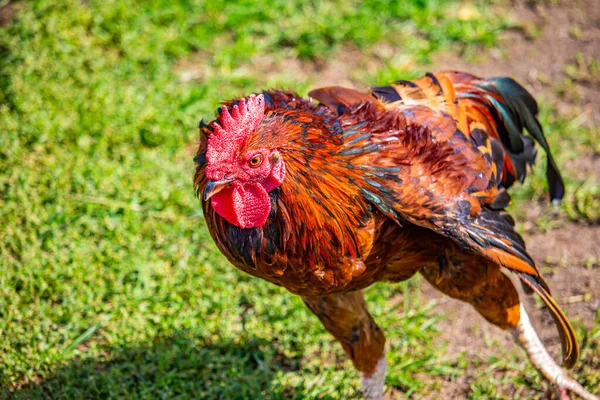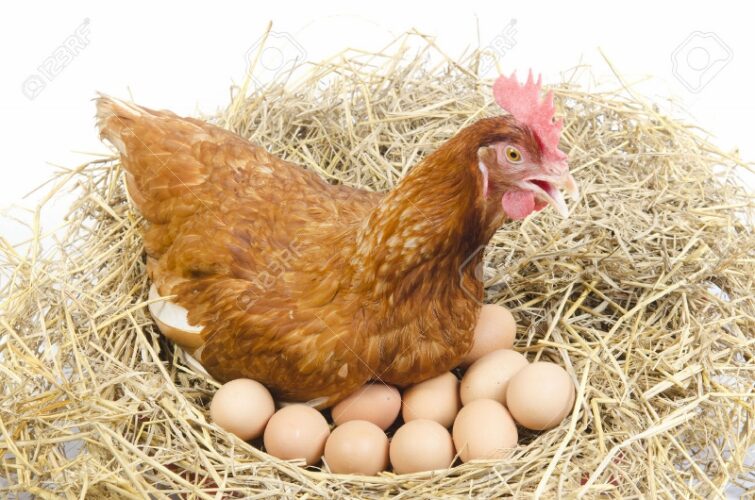The chicken breeding process in a backyard flock will begin with a rooster “tidbitting”. This means that he will look for edible treats with which to tempt his intended conquest.
He will call the hen over and pick up the treat and drop it. If she likes the look of it, she will eat it.
Mating
When he wants to mate with her, he will circle her in a mating dance, dropping one wing and spreading his feathers in display. He might puff out the feathers on his neck as well.

The hen will show whether or not she is interested in his advances. If she is not ready, she will ignore him and move away. If she is keen, she will lower herself into a squatting position.
The rooster mounts her, often gripping the back of her head with his beak. Their cloacas must come into contact in order for him to deliver the sperm package to the hen whose cloaca has turned out to receive the package.
The broody hen in the chicken breeding process
The hen will have been laying eggs anyway, but when she gets broody she will lay a clutch of eggs over about two weeks, then she will sit on the nest. The number of eggs in a clutch varies according to the breed, but the average is about twelve.
She will stay on the nest for 21 days.
Food and water should be provided near the nest, so that she is not off the nest for long when she goes to eat. Sometimes hens go into an almost comatose state for this period. She will wet the eggs with water from her beak in order to maintain the humidity that they need.
Interestingly, the development of the embryo will only start when she begins to sit on the eggs, so the chicks will all hatch at round about the same time.
There is communication between the mother and the chicks while they are still in the eggs. She will make a certain kind of clucking sound that will encourage them to start breaking the egg.
Hatching
A chick has what is called an egg tooth on top of its beak and when it is ready, the chick uses this to start breaking the shell. Once a hole has been made, the chick will rest for some time before it attempts to come out of the shell. It will absorb what is left of the yolk. After some hours it will start pecking again, turning around as it does so, until the end of the shell falls away.
It is important that there is no human intervention at this time. People should not think that they should “help” the chick to break out of the shell. If it is not able to do so on its own over 24 hours, it is probably not a healthy chick. Helping a weak chick may also affect the strength of the breed in future generations. You will notice that the hen does not try to help the chicks at this time.

The hen will stay on the nest for two days after the first chick starts to hatch. After that she will abandon the eggs that have not hatched and will move off the nest.
The mother hen is fiercely protective of her chicks. She will take them to where there is food and water, communicating constantly.
Hen to chick communication
Vocal communication is most important in the hen-chick relationship. She uses sounds to keep the brood together, because they can’t recognise each other until they are about 10 days old. Studies show that chicks use 12 different calls, while adults use 22.
During the chicken breeding process the hen will care for the chicks until they are 6 – 8 weeks old. After that she will lose interest and will start laying again.
To read more on poultry click here.
To receive all our notices and each edition of SA Smallholder register here.

